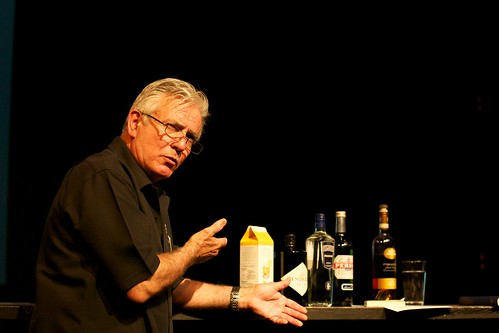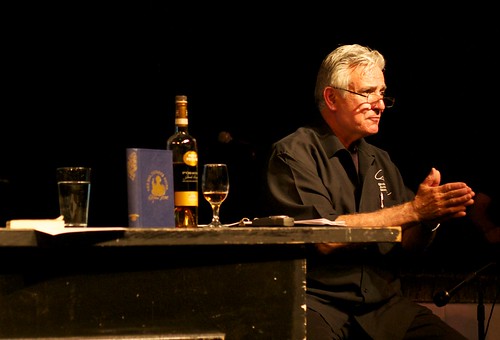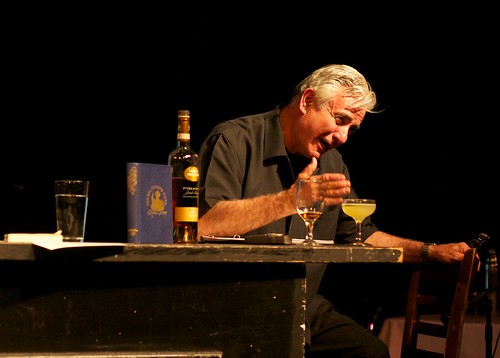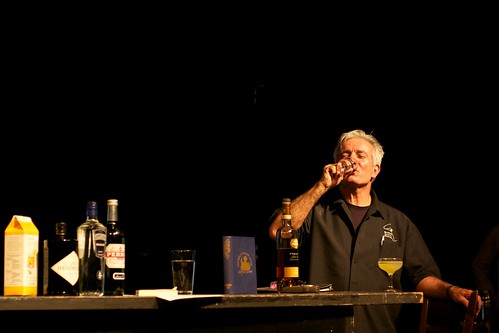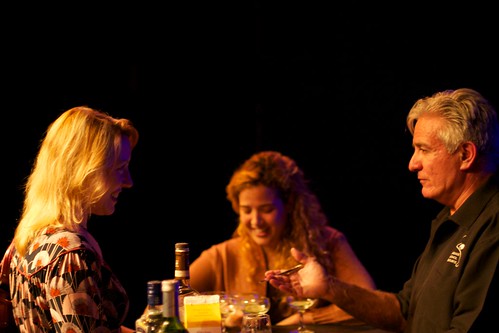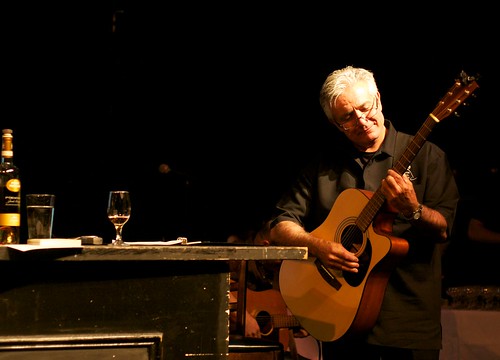
All photos by the author
Dale DeGroff returns Thursday night for what I’ve been told is a bigger and better On the Town show, this time featuring pianist Dan Ruskin. This article, originally published last year, is a good preview for this year’s show.
The fact that you probably already know what a Cosmopolitan cocktail is, and most likely even have a mental picture of the sort of person you imagine would drink it, owes its existence to King Cocktail. Widely credited as the bartender who made it popular (if not ubiquitous) from behind the bar at the Rainbow Room in the 1980s, DeGroff has a long history both with his leg up in front of the bar and as the all-seeing, all-hearing master of ceremonies behind it. The “On the Town” seminar is a chance for him to tell a sample of the stories he has collected – or been a part of – since he moved to New York four decades ago.
To hear him tell that history is to see him live it. In DeGroff’s eyes, the bars, saloons, and nightclubs that dot our cities are centers of communities, places where people find and cement friendships. He found his first New York bar before he found his first apartment, and it was in that bar that he met the person who would actually get him the keys. Beer cost fifty cents and he had only a buck fifty in his pocket, but he had a guitar and knew one song (“Your Cheatin’ Heart”) well enough that somebody bought him a beer – and another, and another – and he was still able to tip the bartender at the end of the night.
And I haven’t even mentioned that the admission to this seminar also included drinks. Upon checkin at the Passenger bar each attendee received a sherry cobbler from his recipe (PX and Oloroso sherry, Cognac, orange peel, sugar, and orange juice, served over crushed ice and garnished with berries). After a brief introduction DeGroff took the Warehouse stage, which had been set up with a portable bar, and picked up his guitar. After a song he led us through the past hundred-odd years or so via their drinks, from the cobblers of the 1800s through the absinthe frappé (the Cosmopolitan of its day, so popular a song was written about it), to a long discussion on Prohibition, its malcontents, and its aftereffects.
One particular delight was the fact that some New York bars never closed, even during Prohibition (a fact you may wish to contrast with the hundreds of speakeasies in DC in those same years). The law stipulated that there had to be an intact container for there to be a crime. The Puncheon Club had collapsing shelves, a hole in the floor, and a staff member in the basement, sitting on a case of liquor, holding a baseball bat. In the event of a raid the barman would drop his bottle through the hole, and the guy in the basement would take that as his cue and grab his bat. With all the evidence smashed in a puddle on the basement floor, the lawmen would leave empty-handed. After a safe interval the barman would send for another case of liquor from his secret cellar next door and start pouring again. The night’s third drink came out of this story, as the night the Puncheon Club closed for good (to make way for Rockefeller Center) the proprietors (who went on to open the 21 Club) served a drink known as the Major Bailey (gin, lemon, lime, sugar, and mint) and handed axes to their guests. At the stroke of midnight the revelers tore the place down themselves.
After Prohibition and the Second World War, the US became a nation of highball drinkers (which you probably know if you’ve heard of Mad Men). When he got a job bartending a friend recommended that he seek out Jerry Thomas’ Bartenders Guide, without mentioning that it hadn’t been printed in a number of decades. Nonetheless he found a copy and a calling. Cocktail culture didn’t begin its recovery until the 1980s, and DeGroff was a driving force in that resurgence. When the Rainbow Room opened, he created a bar menu of classic cocktails made with fresh ingredients as they had been in Jerry Thomas’ day. The bar was a sensation, quickly becoming a place to see and be seen, and the cocktails there made bar and restaurant owners take notice that it was possible to go without mixers and still have a successful, profitable bar.
From the first moments of the cocktail restoration in the 80s his story moved to the present day, with bartenders continuing to rediscover lost or forgotten recipes and to create new ones using ingredients that had previously been unavailable. He illustrated this point with the last cocktail of the night, a yuzu gimlet (Hendricks gin, yuzu, lime, Rose’s lime cordial, and honey syrup). He then stayed around to chat, sip drinks, and sign books.
There were many more stories, but given the limits of this space and my memory after four drinks I’ll have to stop there and recommend you catch him yourself the next time he’s in town Thursday night.
